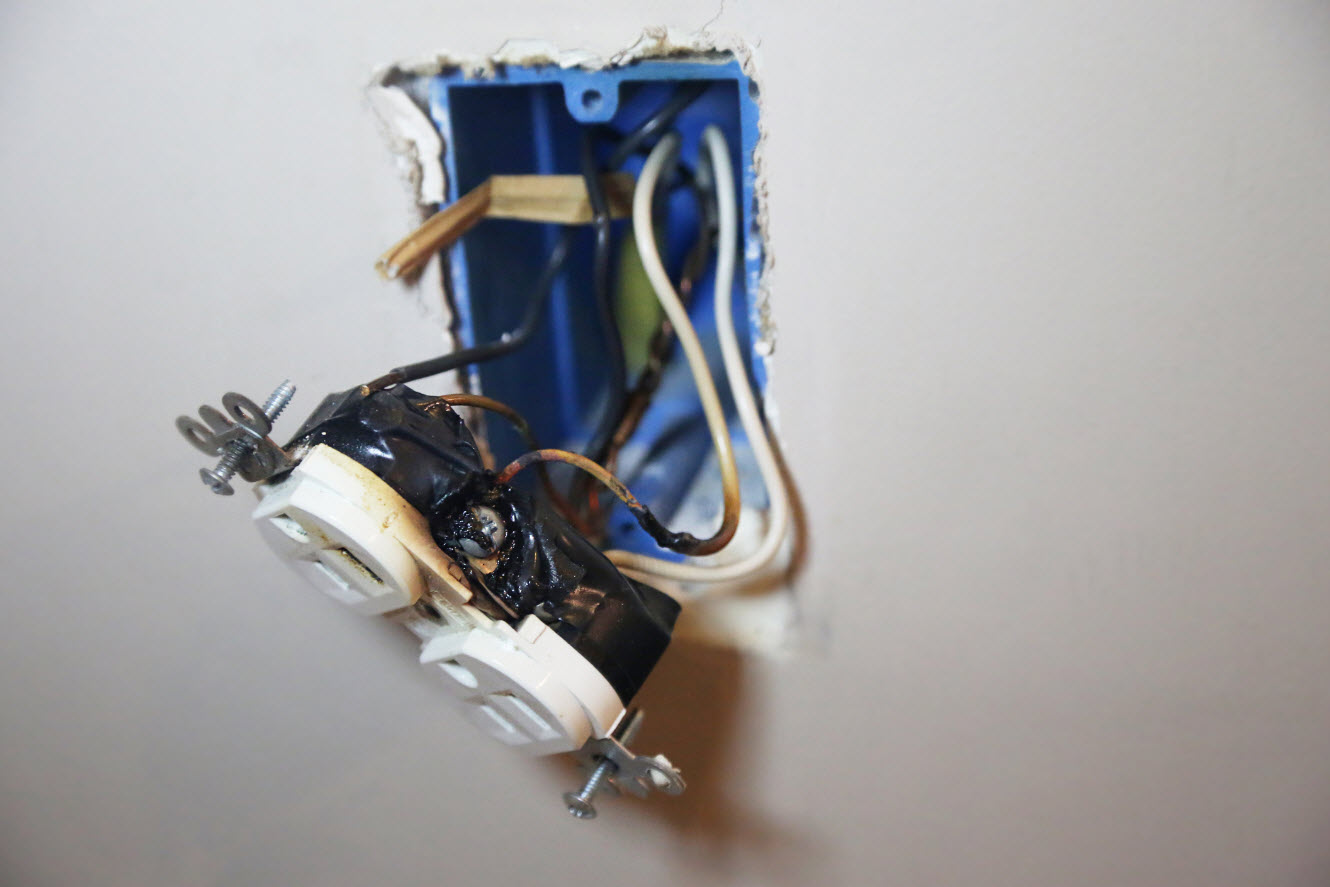Power outages are often an inconvenience. Because our daily lives are so centred around electricity usage, nothing spells relief quite like when power is restored and our appliances hum back to life. However, did you know that power surges can happen when power is restored? While rare, power surges can spark damage to your home appliances and devices.
Thankfully, with a little planning, you can protect your home and favorite electronics.
What is a power surge?
A power surge is an unexpected and temporary increase in current or voltage in an electrical circuit. A surge can occur for several reasons coming from outside or inside your home, including electrical overload and faulty wiring, a lightning strike, or as the result of power restoration efforts. When a surge occurs, sudden jolts of electricity can carry thousands of volts of energy through your home, damaging your appliances and other electronics.
Signs of a power surge
Common signs that may indicate a power surge has occurred are:
- Your lights may flicker, flash or dim more than usual.
- Your appliance and/or device turns off or does not work.
- You can smell a pungent burnt odor around a device or power source.
- Your surge protector or strip requires a reset.
Tips to protect your appliances and electronics
Though most appliances and devices are designed to withstand minor voltage changes, even low level surges can cause damage. To help prevent this, as well as electrical hazards arising from a surge, consider these tips:
Use surge protectors: A surge protector safeguards wiring in appliances and electronic devices against unwanted voltage spikes.
- Surge protecting power bars: are designed to protect electrical devices from power surges by limiting the amount of electricity supplied to your appliances. Not all power bars are equipped with surge protectors, so be sure to check when buying a power bar.
- Surge arresters: are designed to protect all wiring in your home from a power surge. Installed in your electrical panel, they limit the amount of electricity flowing to all outlets and appliances throughout your home.
Ground Fault Circuit Interrupter (GFCI)
A GFCI is a type of outlet that should be installed in areas where appliances are likely to come into contact with water. They are commonly found in bathrooms, kitchens, and outdoors. You can recognize GFCIs by the “Reset” and “Test” buttons located on the outlet plate. GFCIs monitor the electricity flowing in a circuit to sense any loss of current. If a loss of current, or an imbalance between the hot and neutral conductors is detected, the GFCI trips the circuit, cutting off power to the appliance.
GFCIs should be tested at least once a month to ensure that they are working properly. To test your GFCI, follow these steps:
- Plug a nightlight, or similar device, into your GFCI
- Press the “test” button on the outlet plate. The nightlight should turn off.
- Press the “reset” button. The nightlight should turn back on.
- If the nightlight does not turn off when you press the “test” button, your GFCI is not working, and will not trip the circuit in hazardous situations. Contact a licensed electrician to get the problem fixed as soon as possible.
Arc Fault Circuit Interrupter (AFCI)
An AFCI is a type of circuit breaker that is designed to detect and prevent electrical arcs in wiring and appliances. Electricity arcs occur in damaged wires, and can cause fires. An AFCI monitors the flow of electricity throughout a circuit. If it detects a dangerous arc, it will trip the circuit, cutting off power and preventing the electricity arc.
Unplug devices you aren’t using: Look around your home and you'll likely find lots of devices not in use. In most cases, there is no need to keep these plugged in while idle so why not make it a habit to unplug them after use?
Upgrade inadequate wiring: Frequently blown fuses or lights that flicker or dim when a larger appliance kicks in are usually signs of inadequate wiring. To diagnose, repair or upgrade your home’s electrical system, be sure to hire a licensed electrician to safely do the work.
Fix overloaded circuits: You can protect electrical devices from power surges by limiting the amount of electricity supplied to one outlet. Often, kitchen appliances are the culprit. With the help of a licensed electrician, you can set up dedicated circuits for each large appliance.
Grounding your outlets: If you have an older home, it is possible that you may have some outlets that aren’t grounded. Ungrounded outlets not only increase the risk of surges, they also pose a number of safety hazards. For this reason, this is an update that should be placed on your priority list.
Your lights coming back on are meant to be the happy ending to your outage story. With these tips, you can keep it that way!

